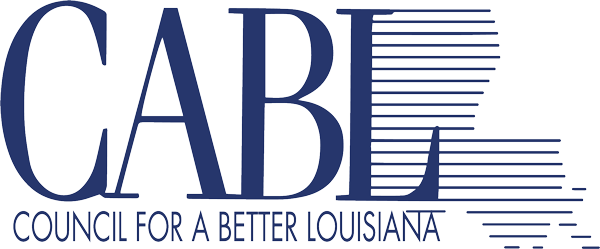
This year there are eight constitutional amendments on the November 8 ballot. Some are a bit complicated, and all require a little homework before you cast your vote. To assist, we’re breaking the list into bite-size chunks. Leading up to the start of early voting on October 25, we will highlight one amendment every few days to give you the background and context you need to understand what they do. And for lagniappe, we offer CABL’s recommendations on each of them.
Amendment #5 Flexibility in Property Tax Adjustments
What It Does: Allows a taxing authority more discretion to maintain millage rates for property taxes below their authorized maximum level.
Background: Some of the laws involving property tax millages can be a little complicated and this one falls in that category. So, let’s start with an example of how this might work.
Let’s say voters approve an annual property tax of 2.5 mills to support a local fire district. Current law requires property values in every parish to be reassessed by the Parish Assessor at least once every four years. Historically, in most jurisdictions that reassessment generates higher property values and when values go up, so does the revenue the millage brings in. When this happens, taxing authorities are generally required to lower the millage rate to a level that brings in no more revenue than the amount that was generated before the reassessment.
So, let’s say the 2.5 mills tax was passed in 2018 and when property is reassessed in 2020 those values go up. Since the tax would now be bringing in more than what was originally called for the local taxing district reduces the millage to 2.0 mills to keep the revenues the same.
But the constitution seems to recognize that there are emergencies or other circumstances when the local taxing authority might need the full 2.5 mills approved by voters, so it allows them a way to go back up to that maximum millage voters approved. However, there is a quirk in the law that says in order to maintain that full taxing authority, the local entity must exercise it at least once every four years between reassessments or permanently lose it.
The resulting effect is that over a four-year period, many local governments reduce the tax rate to keep revenues at the same level, then raise it back for a year to keep its maximum taxing authority, and then reduce it again after property is reassessed. This amendment would remove that requirement.
Comments: Taxing authorities, understandably, do not want to give up any of the taxing authority they are granted by voters, even if they don’t need the additional revenues a millage might generate over time. That’s because they want to have the flexibility to act in the event of an emergency or special need. To keep that flexibility, the current system basically forces them to raise taxes once every four years.
So, in the year just before the required reassessment many of them roll the millage back up to the maximum so they don’t lose their taxing authority, and then ratchet it back down for a time before repeating the cycle again four years later. This doesn’t make a lot of sense.
This amendment will essentially end that constitutional requirement and allow local governments to have the flexibility they want without a four-year roller coaster ride of tax changes. It passed overwhelmingly in the Legislature with support on all sides.
CABL Recommendation: SUPPORT
